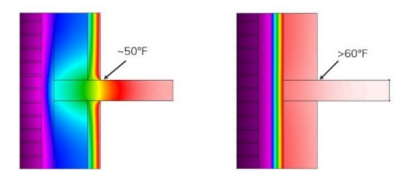Danielle DiDomizio, Amarantha Quintana-Morales, and Matthew Normandeau
i Senior Consulting Engineer, Simpson Gumpertz & Heger Inc., New York, USA, dadidomizio@sgh.com
ii Senior Project Manager, Simpson Gumpertz & Heger Inc., New York, USA, azquintana-orales@sgh.com
iii Principal, Simpson Gumpertz & Heger Inc., New York, USA, mjnormandeau@sgh.com
ABSTRACT
Contemporary cavity wall assemblies are the result of much trial and error over the last century. During the transition from mass masonry walls to the “four barrier” (i.e., water, air, vapor, and thermal barrier) assemblies of modern construction, came what the industry now calls “early veneer walls” of the mid-to-late twentieth century. Early veneer wall systems represented an improvement upon masonry systems that came before and were a beneficial step toward developing today’s contemporary rainscreen assemblies. Yet, these assemblies lack many of the necessary components that comprise an effective building enclosure system, and, due to this, often lead to failure of the system. This paper discusses the transition from mass masonry wall systems to early veneer walls. It reviews the typical construction and material properties of early veneer walls and presents their shortcomings. It also examines these issues in the context of a case study, which included investigation of an early veneer wall system and remediation to address common issues. Additionally, it discusses the transition from early veneer walls to contemporary cavity wall systems, and the changes in codes and standards that followed.
KEYWORDS: brick, cavity, early veneer, enclosure, failure, masonry.
028-DiDomizio.pdf



